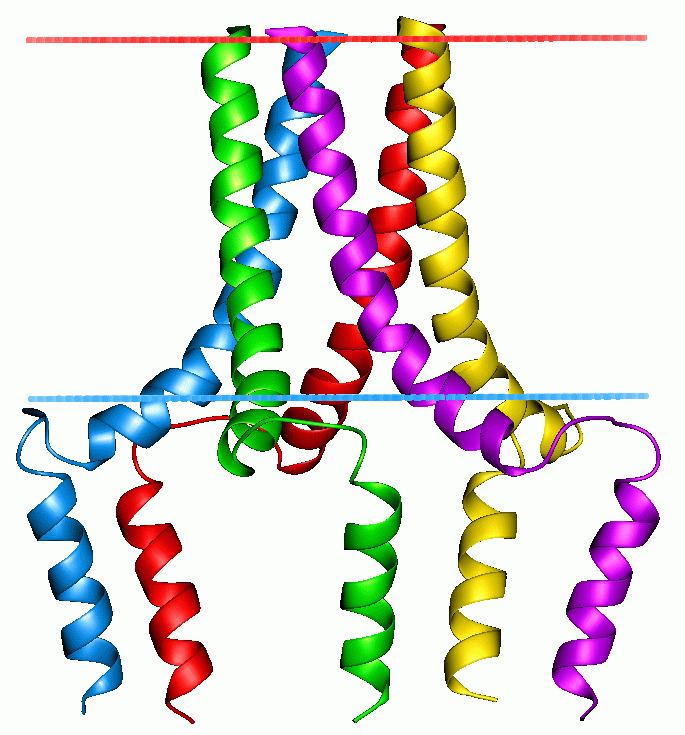Symbol Phospholamban InterPro IPR005984 SUPERFAMILY 1fjk | Pfam PF04272 SCOP 1fjk TCDB 1.A.50 | |
 | ||
Phospholamban, also known as PLN or PLB, is a protein that in humans is encoded by the PLN gene. Phospholamban is a 52-amino acid integral membrane protein that regulates the Ca2+ pump in cardiac muscle cells.
Contents
Function
This protein is found as a pentamer and is a major substrate for the cAMP-dependent protein kinase (PKA) in cardiac muscle. The protein is an inhibitor of cardiac muscle sarcoplasmic reticulum Ca++-ATPase (SERCA2) in the unphosphorylated state, but inhibition is relieved upon phosphorylation of the protein. The relief of inhibition on Ca++-ATPase leads to faster Ca++ uptake into the sarcoplasmic reticulum, thereby contributing to the lusitropic response elicited in heart by beta-agonists. The protein is a key regulator of cardiac diastolic function . Mutations in this gene are a cause of inherited human dilated cardiomyopathy with refractory congestive heart failure.
When phospholamban is phosphorylated by PKA its ability to inhibit the sarcoplasmic reticulum calcium pump (SERCA) is lost. Thus, activators of PKA, such as the beta-adrenergic agonist epinephrine (released by sympathetic stimulation), may enhance the rate of cardiac myocyte relaxation. In addition, since SERCA is more active, the next action potential will cause an increased release of calcium, resulting in increased contraction (positive inotropic effect). When phospholamban is not phosphorylated, such as when PKA is inactive, it can interact with and inhibit SERCA. The overall effect of phospholamban is to decrease contractility and the rate of muscle relaxation , thereby decreasing stroke volume and heart rate, respectively.
Clinical significance
Gene knockout of phospholamban results in animals with hyperdynamic hearts, with little apparent negative consequence.
Mutations in this gene are a cause of inherited human dilated cardiomyopathy with refractory congestive heart failure .
Discovery
Phospholamban was discovered by Arnold Martin Katz and coworkers in 1974.
Interactions
PLN has been shown to interact with SLN and ATP2A1.
